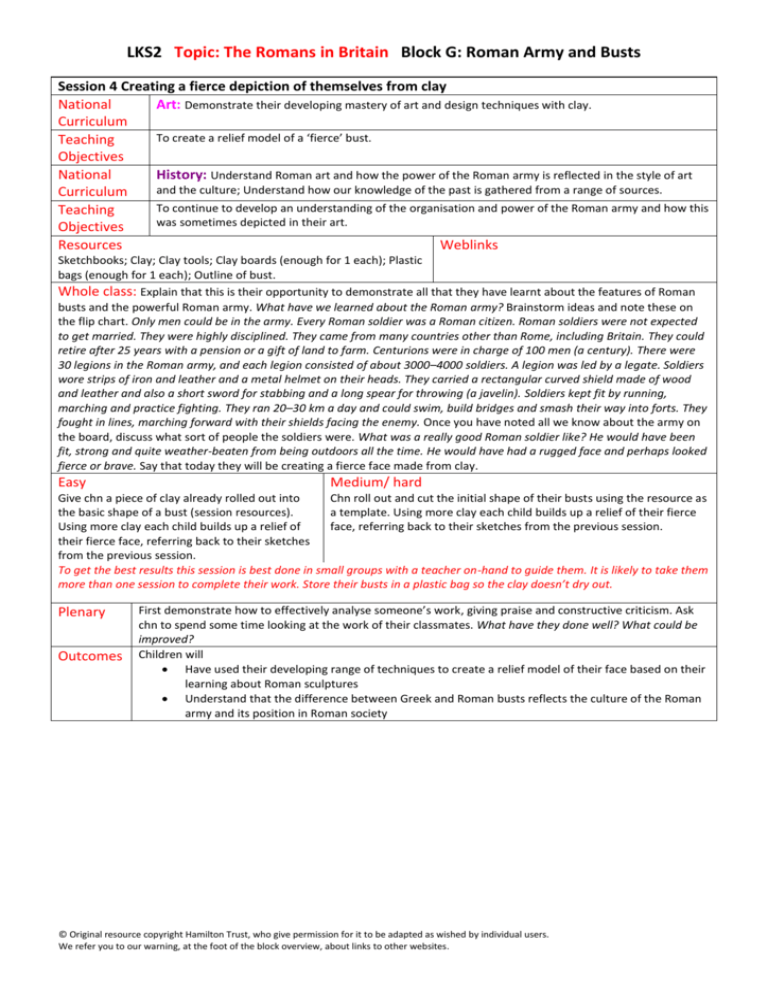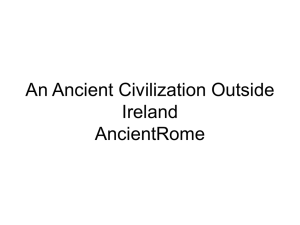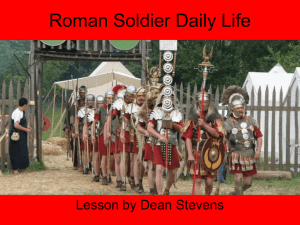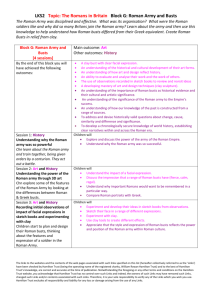Session 04 - Hamilton Trust
advertisement

LKS2 Topic: The Romans in Britain Block G: Roman Army and Busts Session 4 Creating a fierce depiction of themselves from clay National Art: Demonstrate their developing mastery of art and design techniques with clay. Curriculum To create a relief model of a ‘fierce’ bust. Teaching Objectives National History: Understand Roman art and how the power of the Roman army is reflected in the style of art and the culture; Understand how our knowledge of the past is gathered from a range of sources. Curriculum To continue to develop an understanding of the organisation and power of the Roman army and how this Teaching was sometimes depicted in their art. Objectives Resources Weblinks Sketchbooks; Clay; Clay tools; Clay boards (enough for 1 each); Plastic bags (enough for 1 each); Outline of bust. Whole class: Explain that this is their opportunity to demonstrate all that they have learnt about the features of Roman busts and the powerful Roman army. What have we learned about the Roman army? Brainstorm ideas and note these on the flip chart. Only men could be in the army. Every Roman soldier was a Roman citizen. Roman soldiers were not expected to get married. They were highly disciplined. They came from many countries other than Rome, including Britain. They could retire after 25 years with a pension or a gift of land to farm. Centurions were in charge of 100 men (a century). There were 30 legions in the Roman army, and each legion consisted of about 3000–4000 soldiers. A legion was led by a legate. Soldiers wore strips of iron and leather and a metal helmet on their heads. They carried a rectangular curved shield made of wood and leather and also a short sword for stabbing and a long spear for throwing (a javelin). Soldiers kept fit by running, marching and practice fighting. They ran 20–30 km a day and could swim, build bridges and smash their way into forts. They fought in lines, marching forward with their shields facing the enemy. Once you have noted all we know about the army on the board, discuss what sort of people the soldiers were. What was a really good Roman soldier like? He would have been fit, strong and quite weather-beaten from being outdoors all the time. He would have had a rugged face and perhaps looked fierce or brave. Say that today they will be creating a fierce face made from clay. Easy Medium/ hard Give chn a piece of clay already rolled out into Chn roll out and cut the initial shape of their busts using the resource as the basic shape of a bust (session resources). a template. Using more clay each child builds up a relief of their fierce Using more clay each child builds up a relief of face, referring back to their sketches from the previous session. their fierce face, referring back to their sketches from the previous session. To get the best results this session is best done in small groups with a teacher on-hand to guide them. It is likely to take them more than one session to complete their work. Store their busts in a plastic bag so the clay doesn’t dry out. Plenary Outcomes First demonstrate how to effectively analyse someone’s work, giving praise and constructive criticism. Ask chn to spend some time looking at the work of their classmates. What have they done well? What could be improved? Children will Have used their developing range of techniques to create a relief model of their face based on their learning about Roman sculptures Understand that the difference between Greek and Roman busts reflects the culture of the Roman army and its position in Roman society © Original resource copyright Hamilton Trust, who give permission for it to be adapted as wished by individual users. We refer you to our warning, at the foot of the block overview, about links to other websites.






